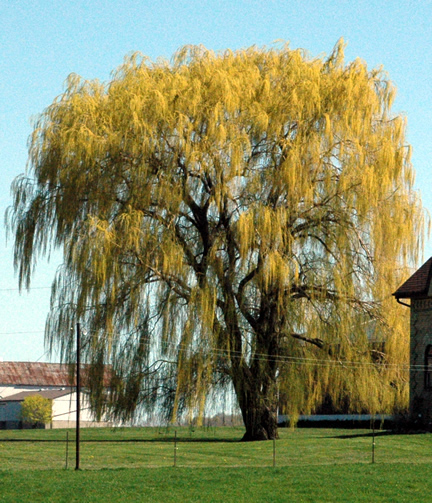
Woody > Salix > Salix alba > Salix alba
Salix alba
White Willow
Origin: Europe, North Africa to Central Asia.
| Family |
| Salicaceae |
| Genus |
| Salix |
| Species |
| alba |
| Category |
| Woody |
| Type |
| Tree (deciduous) |
| Pronunciation |
| USDA Hardiness Zone |
| 2 |
| Canadian Hardiness Zone |
| 0 |
| RHS Hardiness Zone |
| H7 |
| Temperature (°C) |
| -46 - (-40) |
| Temperature (°F) |
| -50 - (-40) |
| Height |
| 25 m |
Photographs
Description and Growing Information
Flowering Period
| General Description |
| A fast-growing dioecious tree with yellow-brown bark, grey-green leaves that are white beneath and turn various shades of yellow in autumn, and male and female catkins in spring. |
| Landscape |
| While this tree is not great for most residential areas, will do well in areas where other trees and shrubs will falter, and along rivers or ponds. |
| Cultivation |
| Grow in full sun in a moist to wet, well-drained soil. |
| Shape |
| A broad, loose, open crown. |
| Growth |
| Fast |
| Pests |
| Watermark disease (Brenneria salicis), Willow anthracnose (Marssonina salicicola). |
| Bark/Stem Description |
| The bark is grey-brown, deeply fissured in older trees. |
| Leaf Description |
| The leaves are paler than most other willows, due to a covering of very fine silky white hairs, particularly on the underside. They are 5-10 cm long and 5-15 mm wide. |
| Flower Description |
| The flowers are produced in catkins in early spring, and pollinated by insects. It is dioecious, with male and female catkins on separate trees; the male catkins are 4-5 cm long and the female catkins are 3-4 cm long at pollination, lengthening as the fruit mature. |
